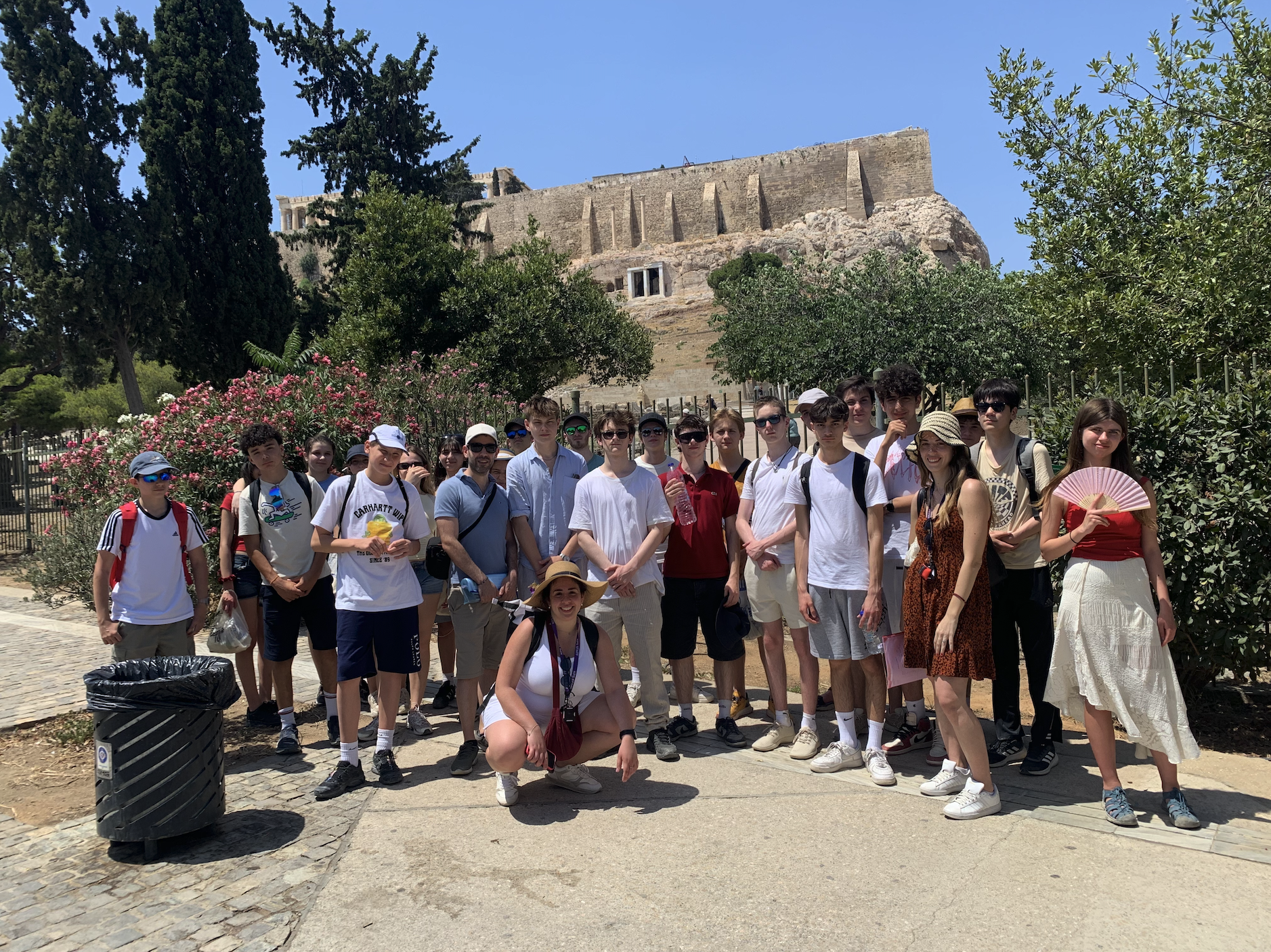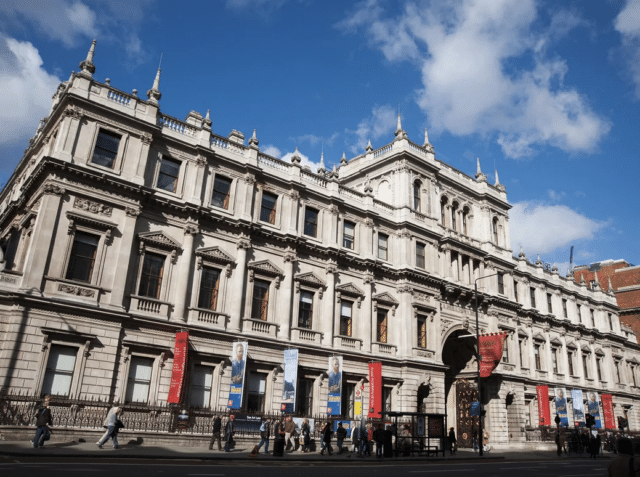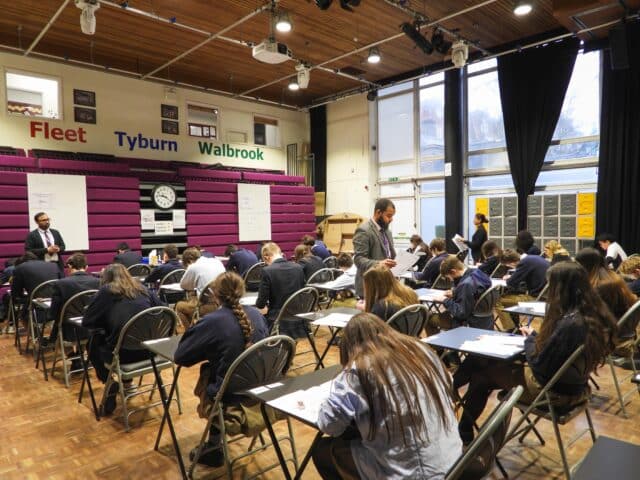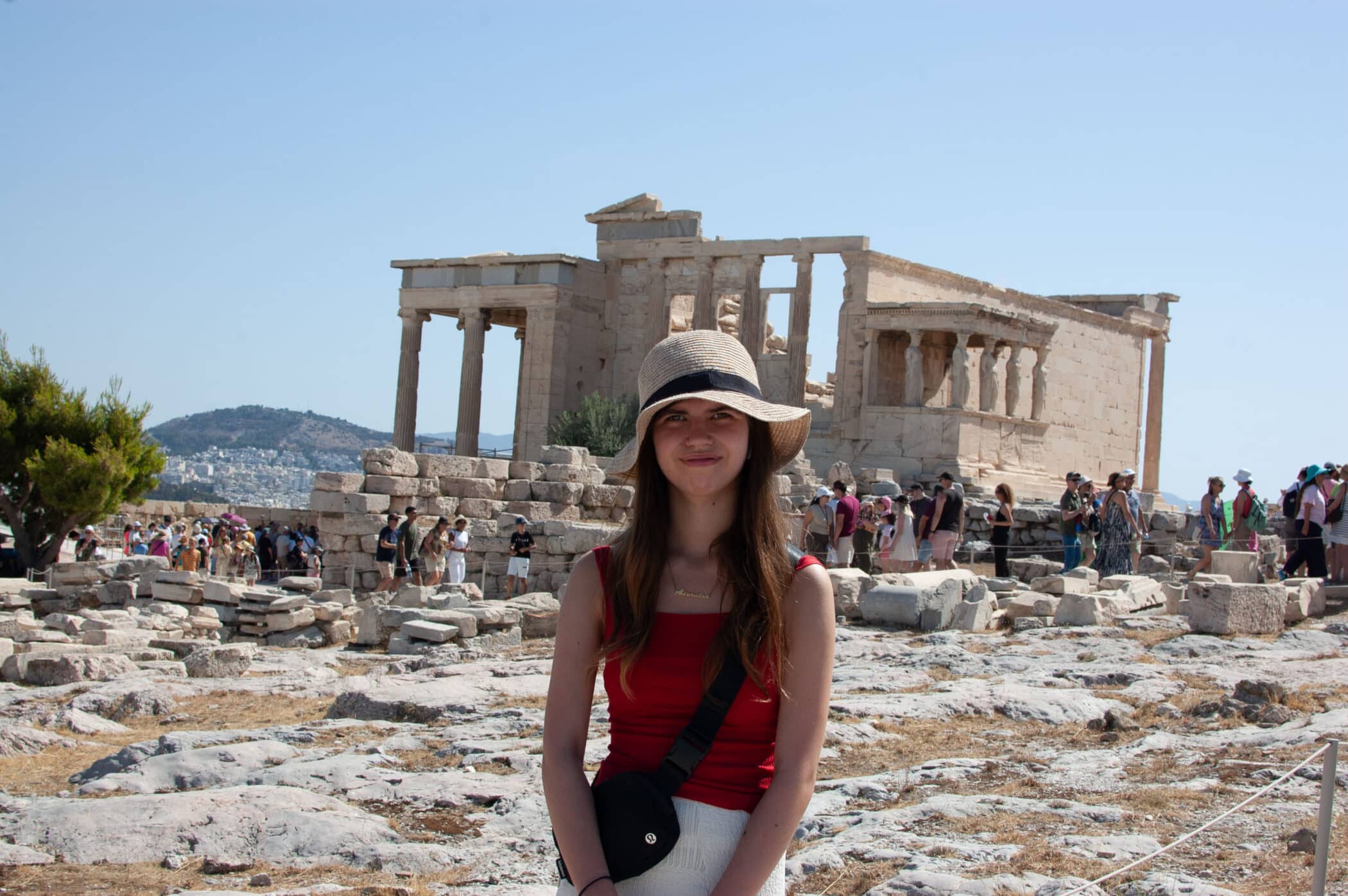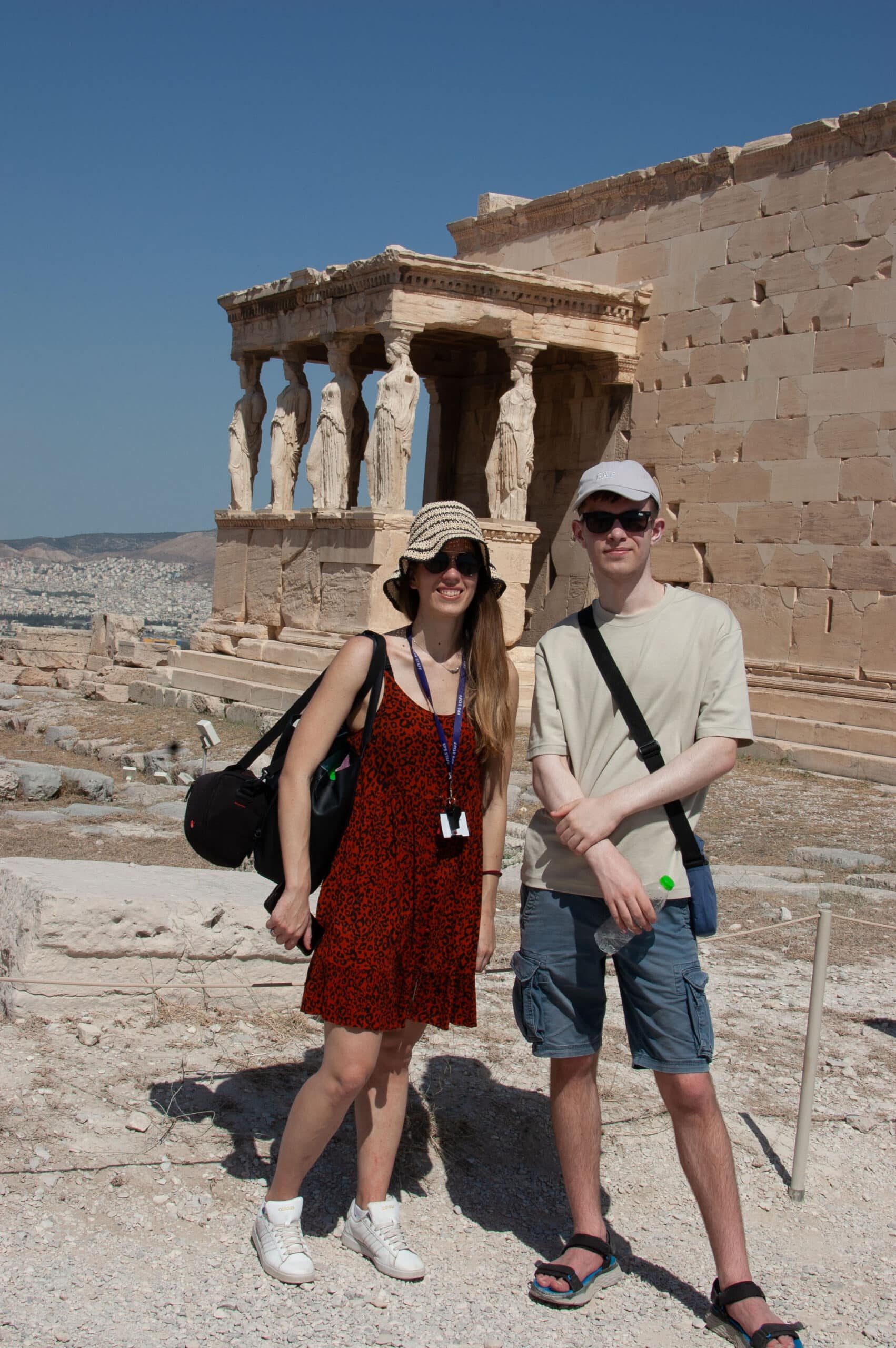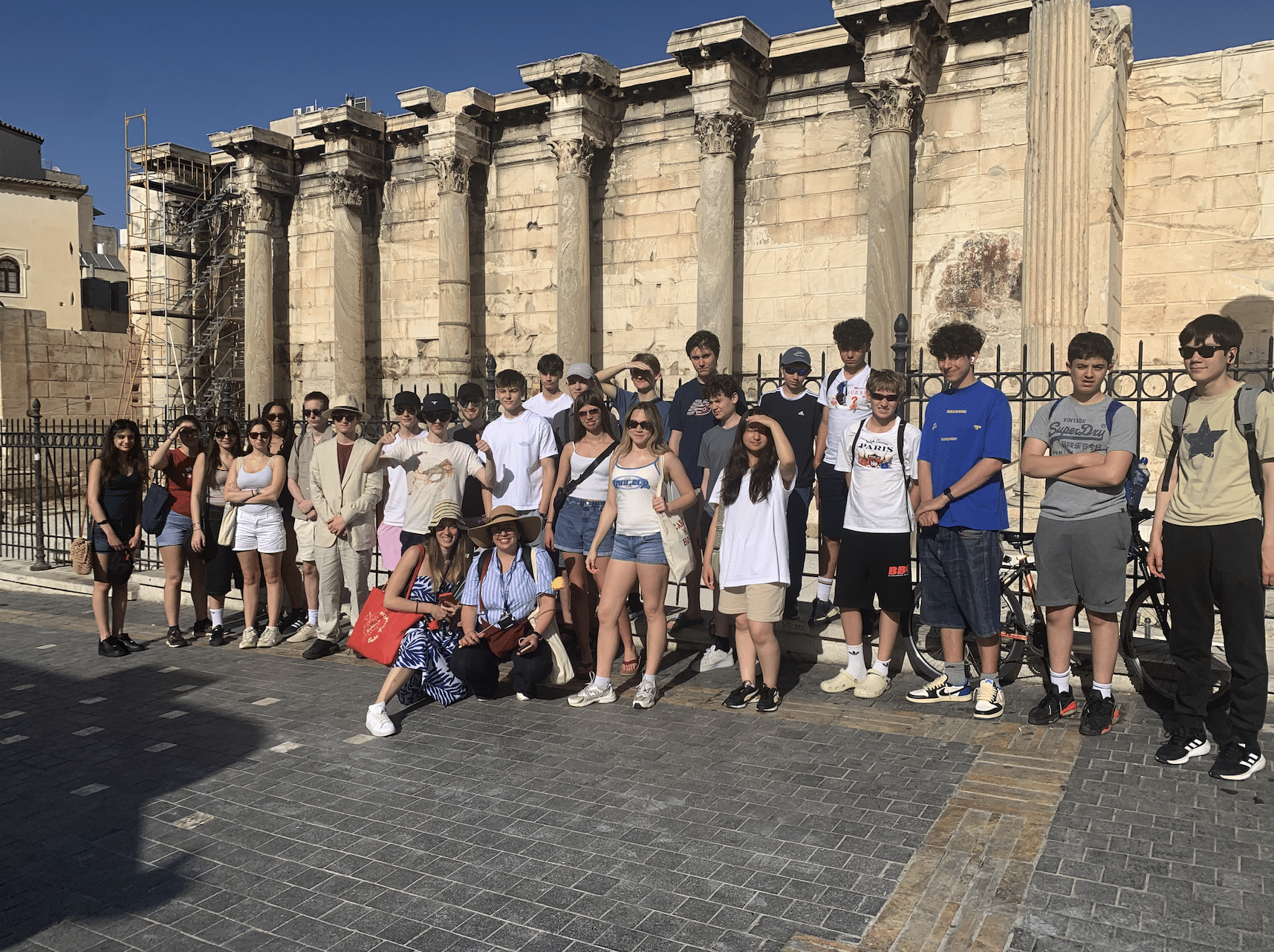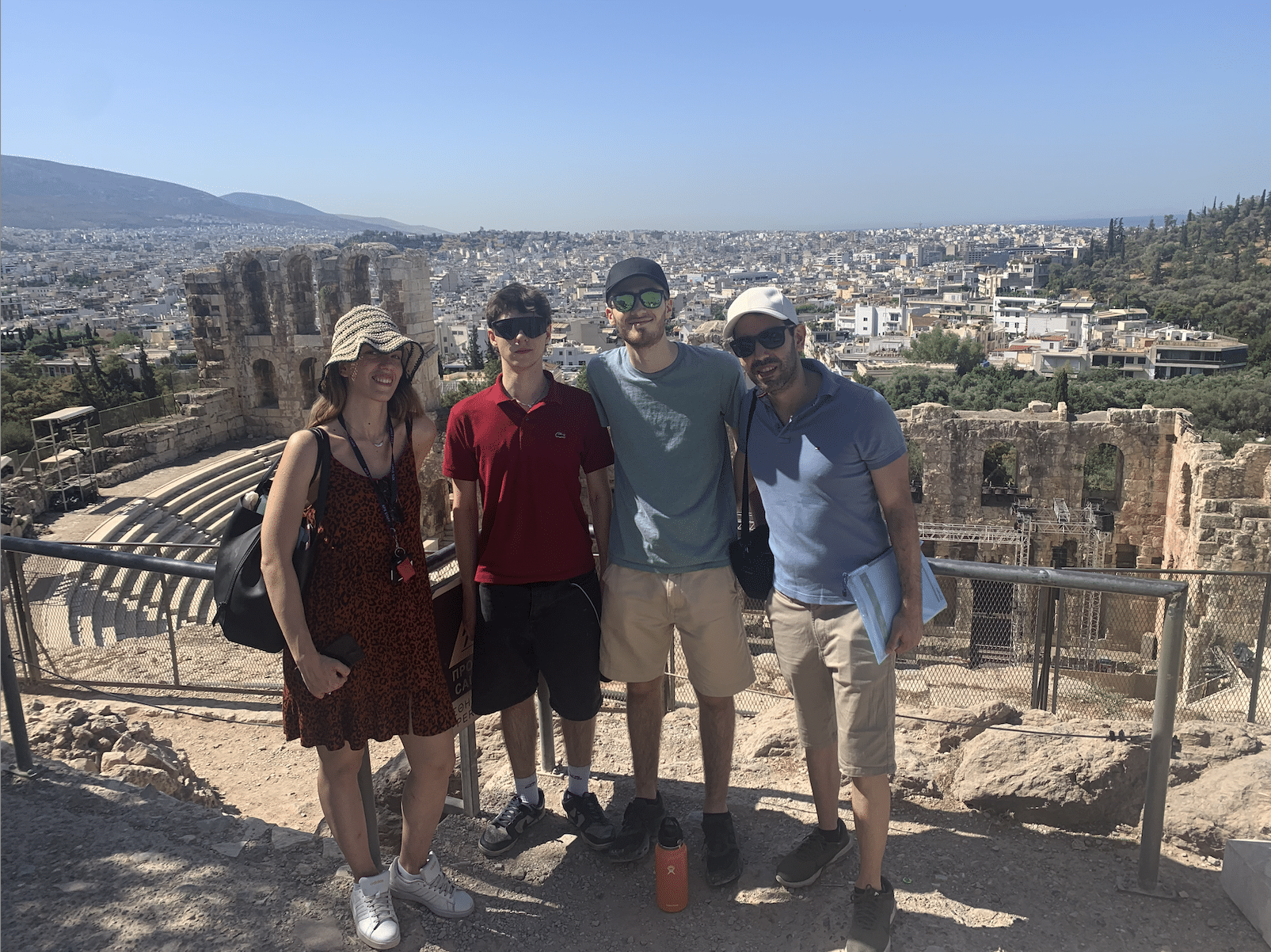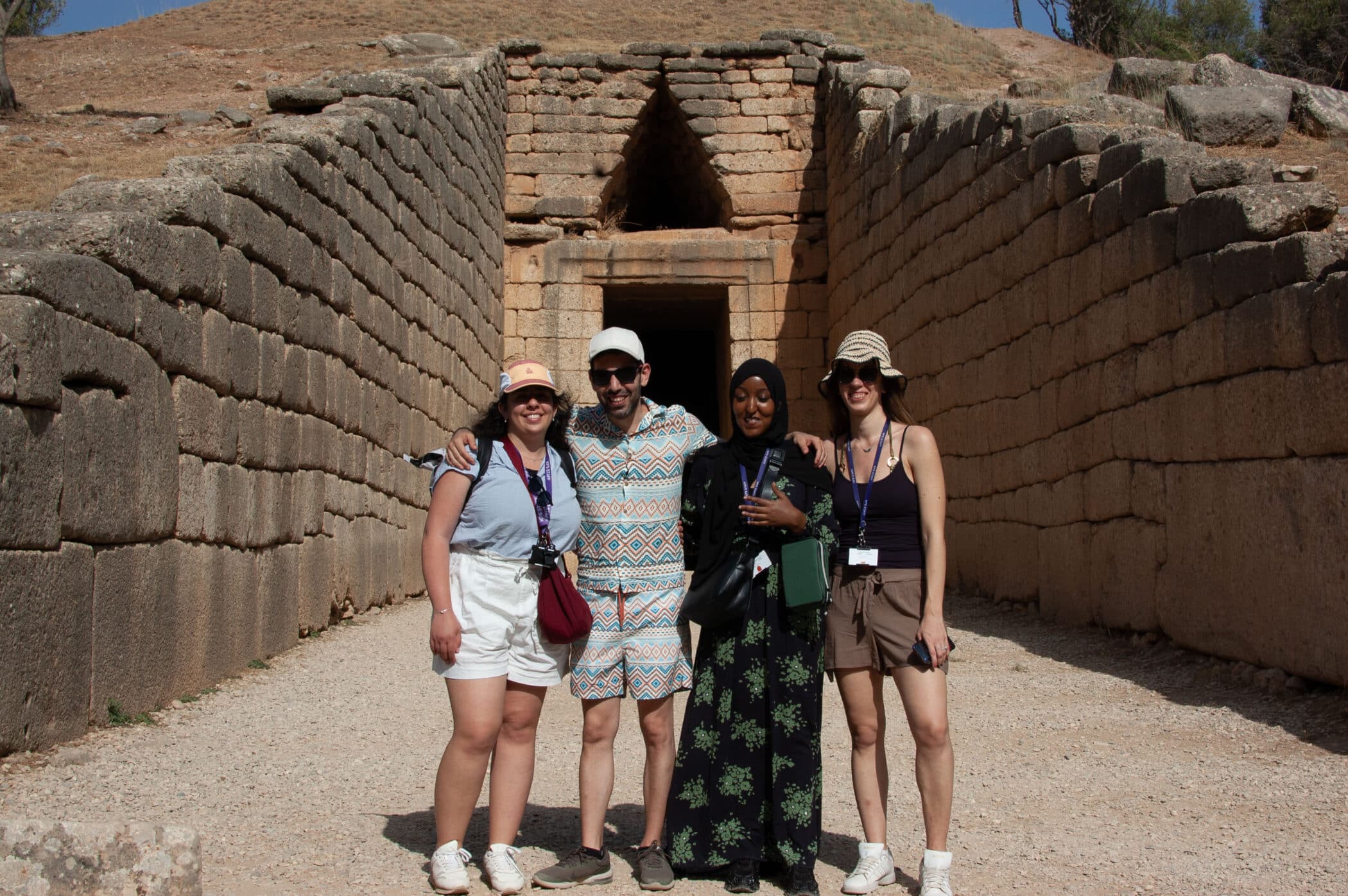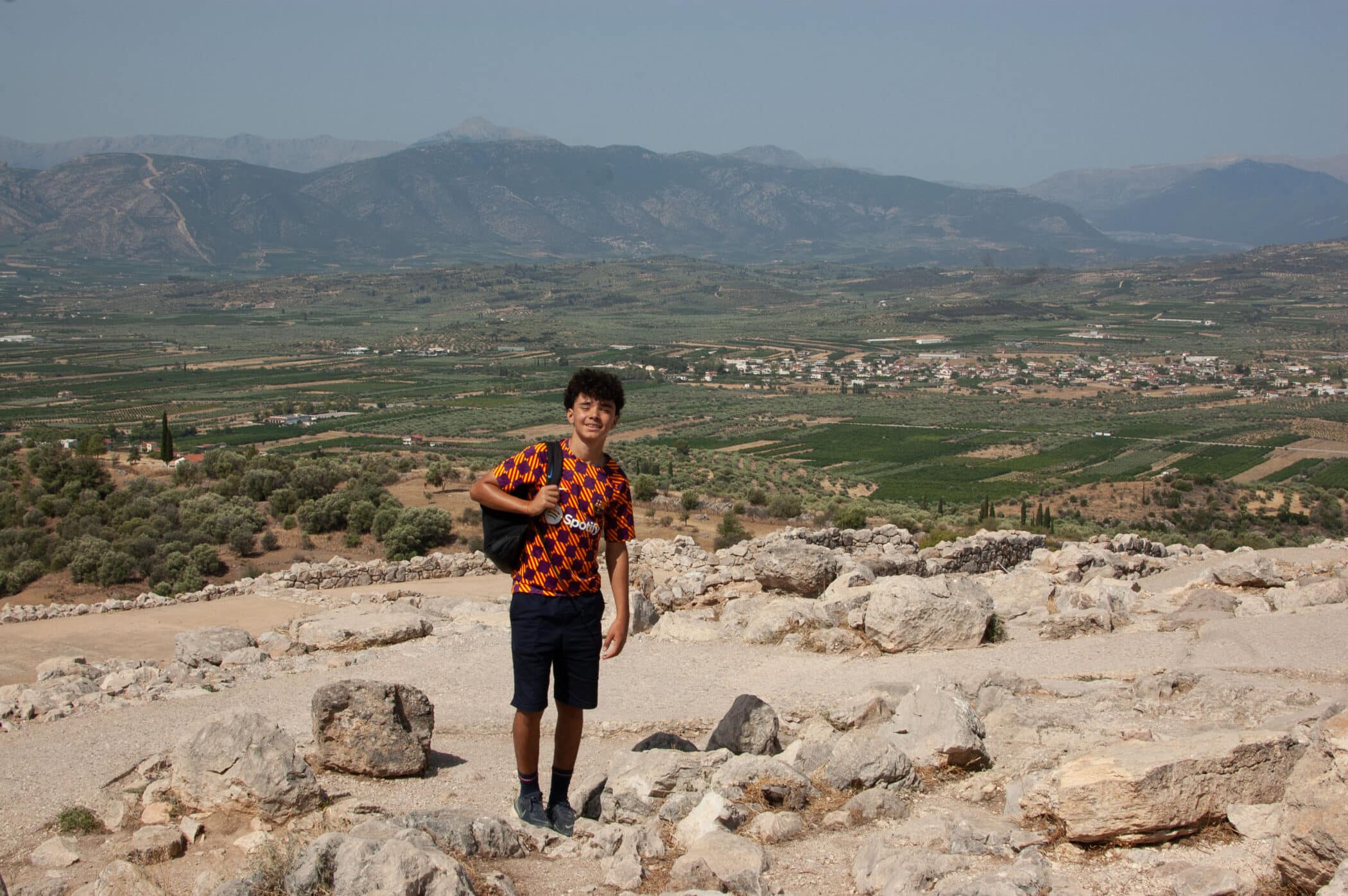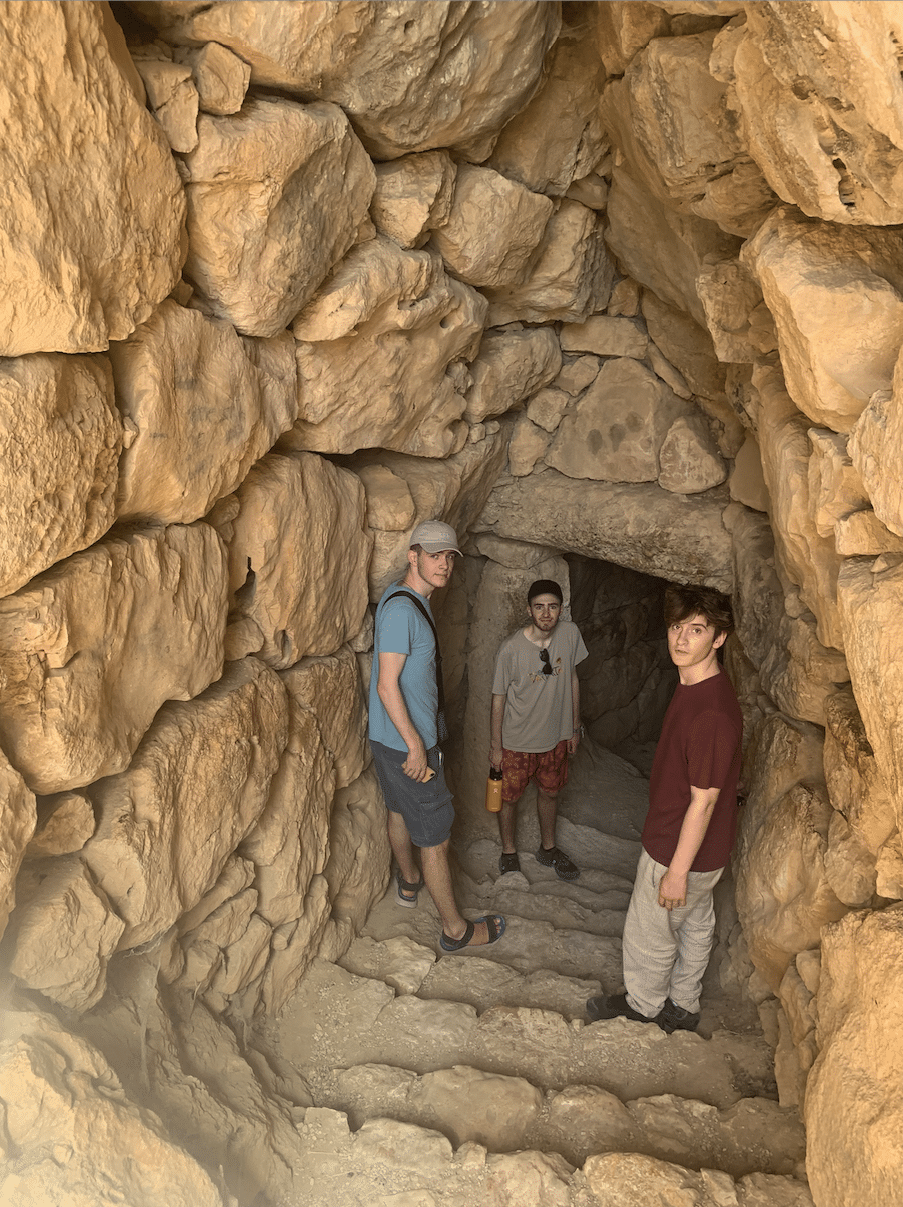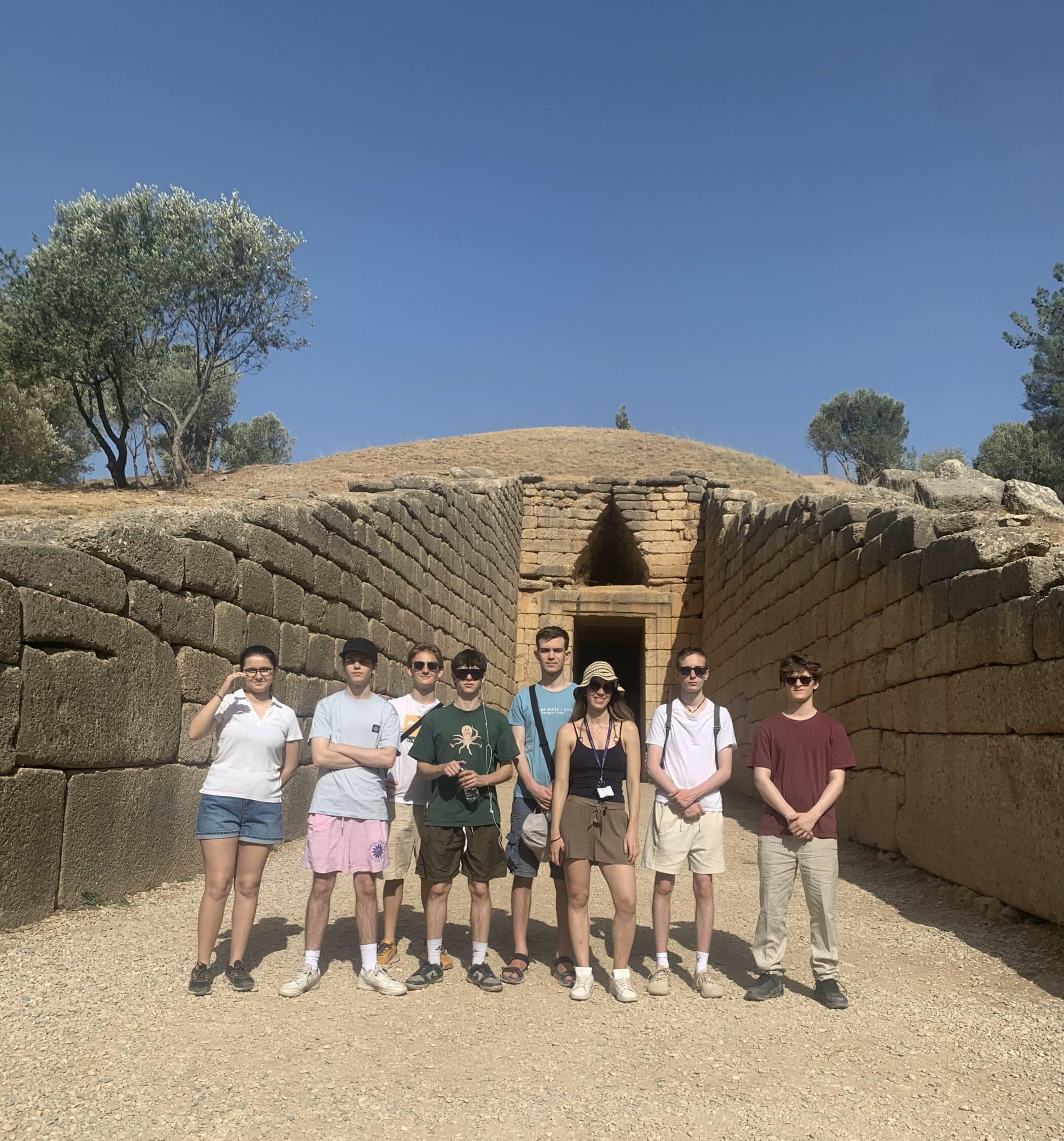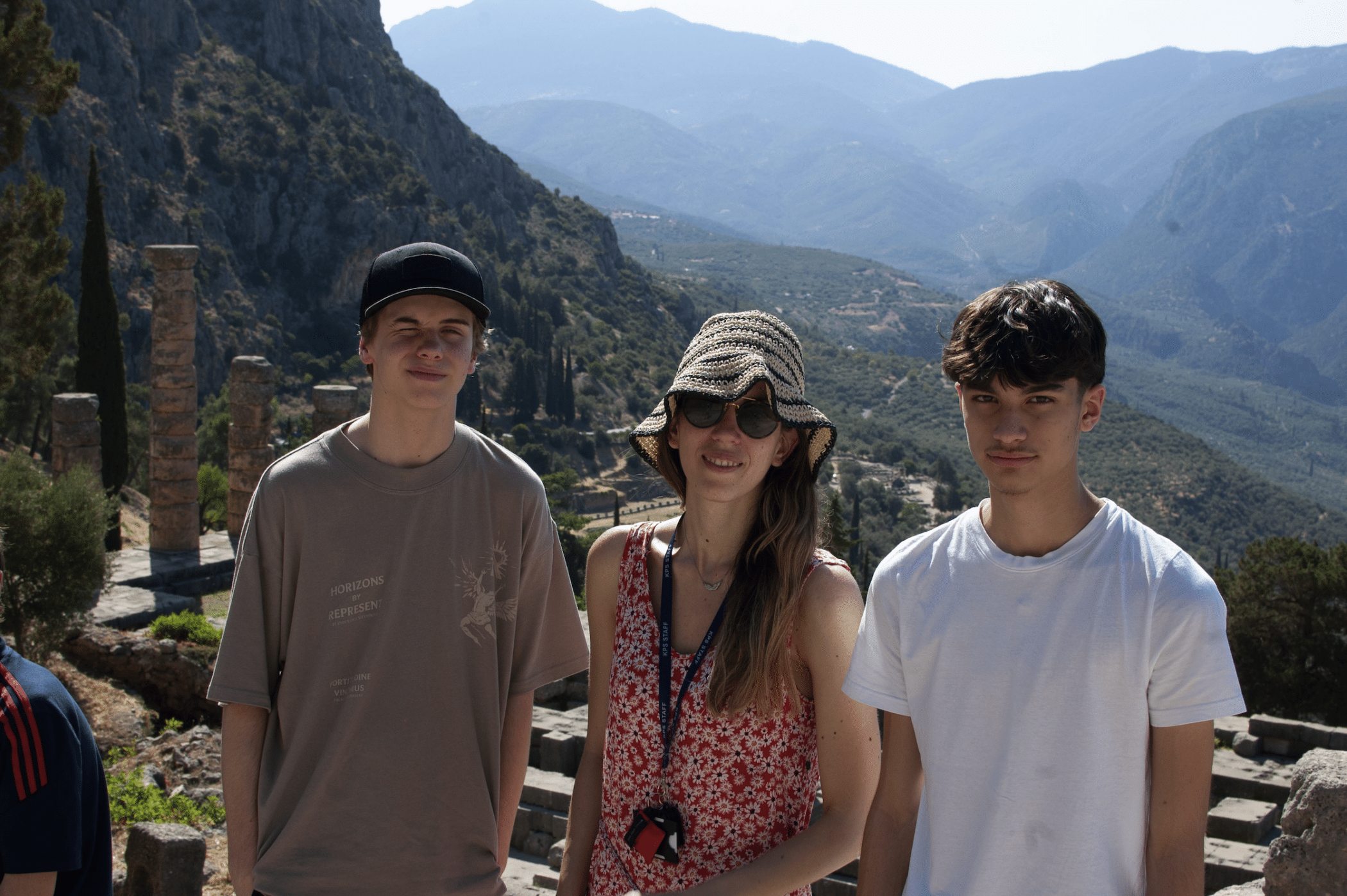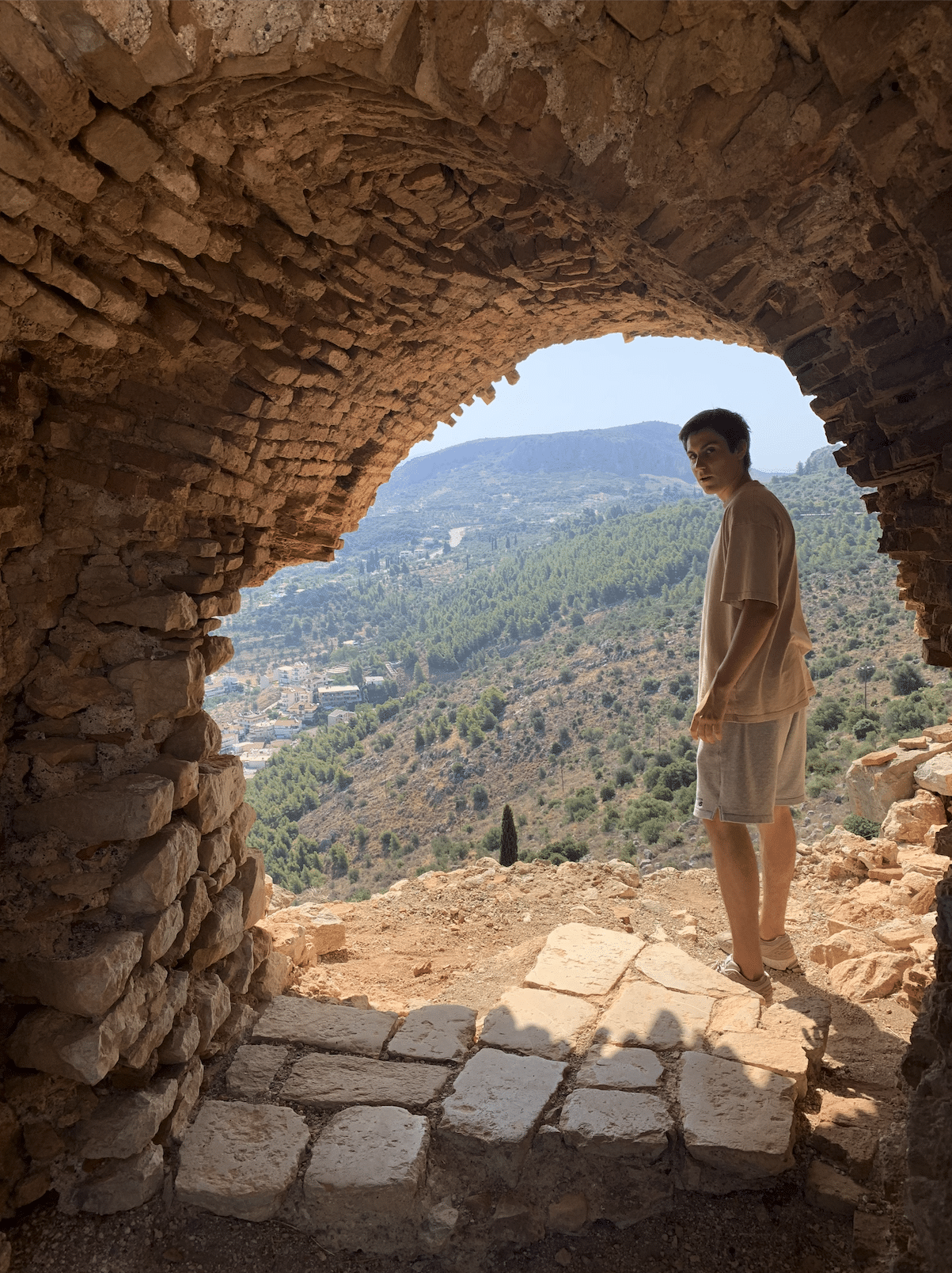Related articles
Our students recently embarked on an enlightening classics trip to Greece, exploring the historical wonders of Athens, Delphi, and Nafplio over five days of culture, history, mythology, and traditional Mediterranean cuisine.
Athens: The Heart of Ancient Civilisation
The trip began in Athens, where the students visited the Archaeological Museum of Athens – the largest of its kind in the country – housing antiquities from as early as the Neolithic period and living up to its reputation as one of the world’s most important museums devoted to ancient Greek art.
The next stop was the Acropolis, the iconic archaeological site offering breathtaking views of the city and a deep dive into ancient Greek civilisation. Students explored the Parthenon, the Erechtheion, and the Propylaea, marvelling at the architectural genius and the historical significance of these structures. The Acropolis served as a religious centre and a symbol of the glory of ancient Athens.
Finally, they visited the Ancient Agora, once the heart of athletic, artistic, spiritual, and political life in Athens, and a crucial site in the development of Athenian democracy. They walked through the remnants of this once bustling marketplace, visiting the well-preserved Temple of Hephaestus, before setting off to Delphi.
Delphi: The Navel of the World
Once in Delphi – often referred to as the “navel of the world” in ancient Greek mythology – students visited the town’s famed archaeological site, set against the dramatic backdrop of Mount Parnassus. Once home to the Oracle of Delphi, it was on this site where the god Apollo was believed to speak through his priestess, the Pythia.
They also visited the Temple of Apollo, the ancient theatre, and the stadium, gaining insights into the religious and cultural practices of the time. The accompanying museum showcased artefacts such as the Charioteer of Delphi and the Sphinx of Naxos.
On the way to their next destination, Nafplio, the group also stopped to view the Corinth Canal, an engineering marvel which connects the Gulf of Corinth with the Saronic Gulf in the Aegean Sea effectively making the Peloponnese an island within the mainland. The canal, dug through the narrow Isthmus of Corinth at sea level without the use of locks, stretches 6.4 kilometers (4 miles) in length but is only 21.4 meters (70 feet) wide at its base, making it impassable for most modern ships.
Nafplio: The ‘Island Within the Mainland’
Once in Nafplio, a historic seaport in the Peloponnese, our students explored the ancient city of Mycenae, the legendary kingdom of Agamemnon. They visited the Tomb of Agamemnon, also known as the Treasury of Atreus, a monumental beehive tomb that dates back to the 13th century BC. This site offered a glimpse into the Mycenaean civilisation, renowned for its palatial structures and significant role in Greek mythology.
Later, they climbed to the Fortress of Palamidi, a formidable structure built by the Venetians during their occupation in the early 19th century. The fortress, perched on a hill overlooking the town, provided panoramic views of the Argolic Gulf and the surrounding landscape. It also served as a testament to the strategic importance of Nafplio throughout history.
The final highlight of the trip was a visit to the Theatre of Epidaurus, located within the archaeological site of the Sanctuary of Asclepius. In its day, Epidavros was revered as a place of miraculous healing, with visitors travelling great distances to seek cures for their ailments at the sanctuary dedicated to the god of medicine. Today, the remarkably well-preserved theatre is famous for its extraordinary acoustics and continues to host performances during the Hellenic Festival. The students were captivated by the theatre’s design and its enduring legacy as a venue for classical Greek theatre.
The trip through Athens, Delphi, and Nafplio was more than just a journey through physical landscapes; it was a voyage through time, offering the students an eyewitness account of the culture and civilisation of the ancient world. From the bustling Agora of Athens to the mystical ruins of Delphi and the historic seaport of Nafplio, they experienced the rich cultural and historical heritage of Greece and brought classics to life in a way that is simply not possible within the classroom.



